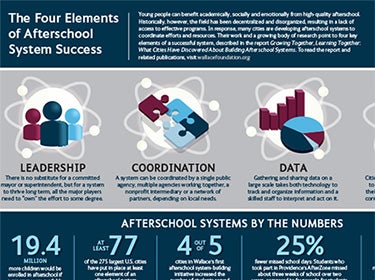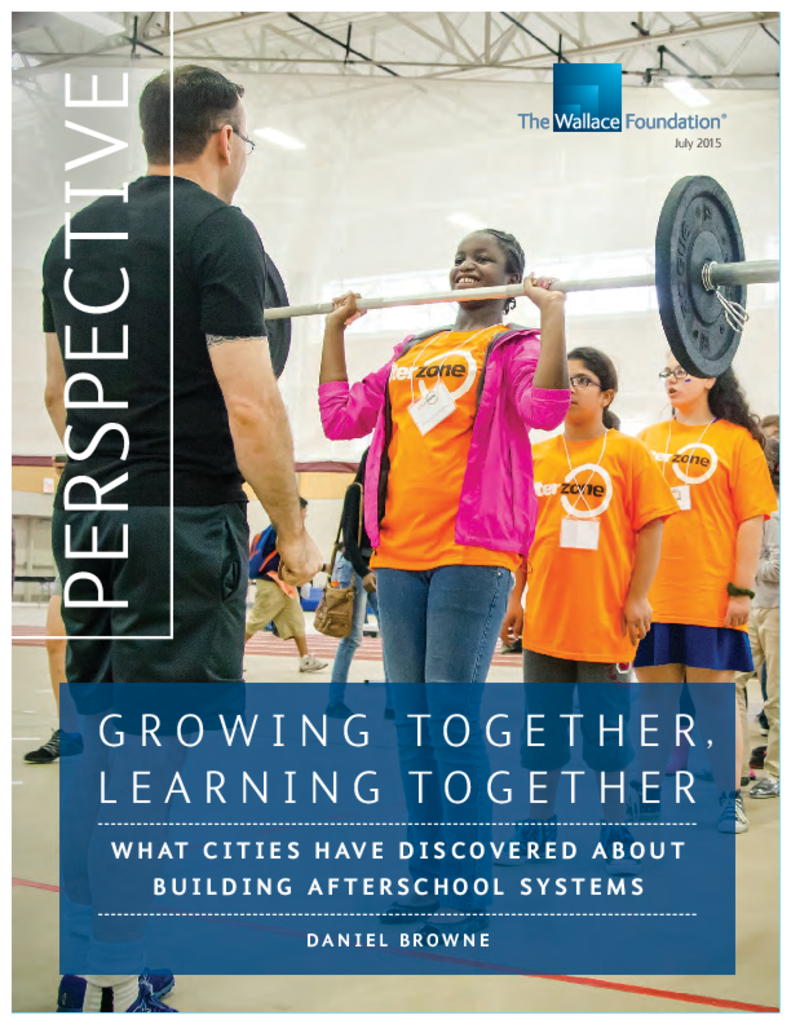Many cities have been taking on the task of afterschool system-building, as more useful information has become available about how to coordinate such a large-scale citywide effort. This report from Wallace offers a digest of evidence and ideas to date on how to build and sustain an afterschool system, along with what challenges and opportunities lie ahead for this promising field.
The report focuses on the four components of system-building that current evidence and experience suggest are essential:
- Strong leadership from major players: There is no substitute for a committed mayor or superintendent, but city agencies, private funders, schools, program providers and families all need to “own” the effort to some degree to ensure long-term success.
- Coordination that fits local context: A system’s coordinating entity can be a single public agency, multiple agencies working together, a nonprofit intermediary or a network of partners, depending on local needs.
- Effective use of data: Large-scale data gathering and sharing takes both technology to track and organize information and a skilled staff to interpret and act upon it.
- A comprehensive approach to quality: Cities must decide upon their definition of quality, how “high stakes” to make their assessments of the quality of individual programs and how to support continuous program improvement.




